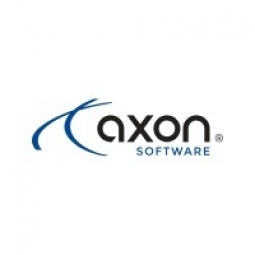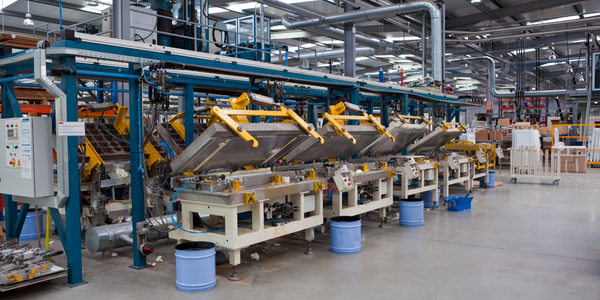适用功能
- 产品研发
用例
- 人员跟踪与监控
- 时间敏感网络
服务
- 系统集成
- 培训
关于客户
本案例研究中的客户是一家使用过时的计算机系统进行运营的公司。该公司的系统最后一次更新是在 2000 年,对于公司的需求来说,它已经过时且效率低下。该公司需要一个现代化、可靠且高效的系统来处理工资、应收账款和其他财务业务。该公司还需要一个可以提供详细财务报告的系统,以帮助他们跟踪财务状况并做出明智的决策。该公司还在寻找一种用户友好且直观的系统,使他们能够轻松适应新系统。
挑战
2019 年,该公司面临着重大挑战,他们的过时计算机系统(上次更新于 2000 年)在年中完全关闭。这一突发事件对公司的运营和财务稳定构成了严重威胁。该公司需要一个快速有效的解决方案来让他们的运营重回正轨。即将到来的大流行使情况变得更加复杂,这将要求公司适应新的工作和管理业务的方式。该公司需要一个现代化、可靠且高效的系统来处理工资、应收账款和其他财务业务。
解决方案
该公司向 Axon 寻求解决方案。 Axon 为他们提供了一个全面的软件系统,能够让公司在三天内启动并运行。该软件使跟踪工资和应收账款等事情变得简单。它还提供了将文档附加到应付账款的功能,从而消除了物理归档的需要,并使共享和访问信息变得更加容易。该软件还提供详细的财务报告,帮助公司跟踪财务状况并做出明智的决策。该软件还用户友好且直观,使公司能够轻松适应新系统。
运营影响
数量效益

Case Study missing?
Start adding your own!
Register with your work email and create a new case study profile for your business.
相关案例.

Case Study
Goldcorp: Internet of Things Enables the Mine of the Future
Goldcorp is committed to responsible mining practices and maintaining maximum safety for its workers. At the same time, the firm is constantly exploring ways to improve the efficiency of its operations, extend the life of its assets, and control costs. Goldcorp needed technology that can maximize production efficiency by tracking all mining operations, keep employees safe with remote operations and monitoring of hazardous work areas and control production costs through better asset and site management.

Case Study
Cisco Kinetic for Oil and Gas: Refineries and Plants
The plant manager and safety teams needed a solution that provided near real-time visibility of gas detection and personnel location, with easy to understand visualization and alerting dashboards. This would enable them to improve productivity through decreasing the time taken to start work, optimize evacuation route planning, and to meet critical staff safety and compliance goals.

Case Study
Industry 4.0 at ALPLA: Enhancing Factory Efficiency with IoT
ALPLA, a global leader in packaging solutions, faced several challenges as the complexity of their production machinery increased. The need for highly trained specialists in each factory led to higher personnel costs, difficulties in recruiting experienced talent at each location, and costly personnel turnover. Furthermore, less experienced operators running the machines sub-optimally impacted resource consumption and overall equipment effectiveness (OEE). ALPLA also faced the challenge of monitoring visual inspection systems in every line of their plants, which was almost impossible to do manually. In 2016, ALPLA decided to use data from the 900 different types of embedded sensors in each factory to address these issues. However, their initial choice of SQL Server as the data store for the sensor data proved inadequate, as it was unable to cope with their data requirements.

Case Study
Digital Transformation of Atlanta Grout & Tile: An IoT Case Study
Atlanta Grout & Tile, a Tile, Stone & Grout restoration company based in Woodstock, Georgia, was facing challenges with its traditional business model. Despite steady growth over the years, the company was falling behind the web revolution and missing out on the opportunity to tap into a new consumer base. They were using independent software from different vendors for each of their department information and workforce management. This resulted in a lot of manual work on excel and the need to export/import data between different systems. This not only increased overhead costs but also slowed down their response to clients. The company also had to prepare numerous reports manually and lacked access to customer trends for effective business decision-making.

Case Study
Centralizing Data for Improved Efficiency: A Case Study on Malvern Panalytical
Malvern Panalytical, a UK-based hi-tech electronics company, was grappling with the challenge of decentralized data storage. The company had a vast amount of unstructured data scattered across various platforms, from hard drives to emails and floppy disks. This made the data searching process extremely cumbersome and inefficient. The company's rapid growth, from 200 to over 1,000 employees in a decade, and expansion across three continents further exacerbated the need for a more structured and centralized data system. As a company involved in electronics manufacturing and software development, it was crucial for Malvern Panalytical to find a platform that could structure all their data, track all modifications of documents in real time, and provide clear visibility of the internal information flow across all its facilities.








